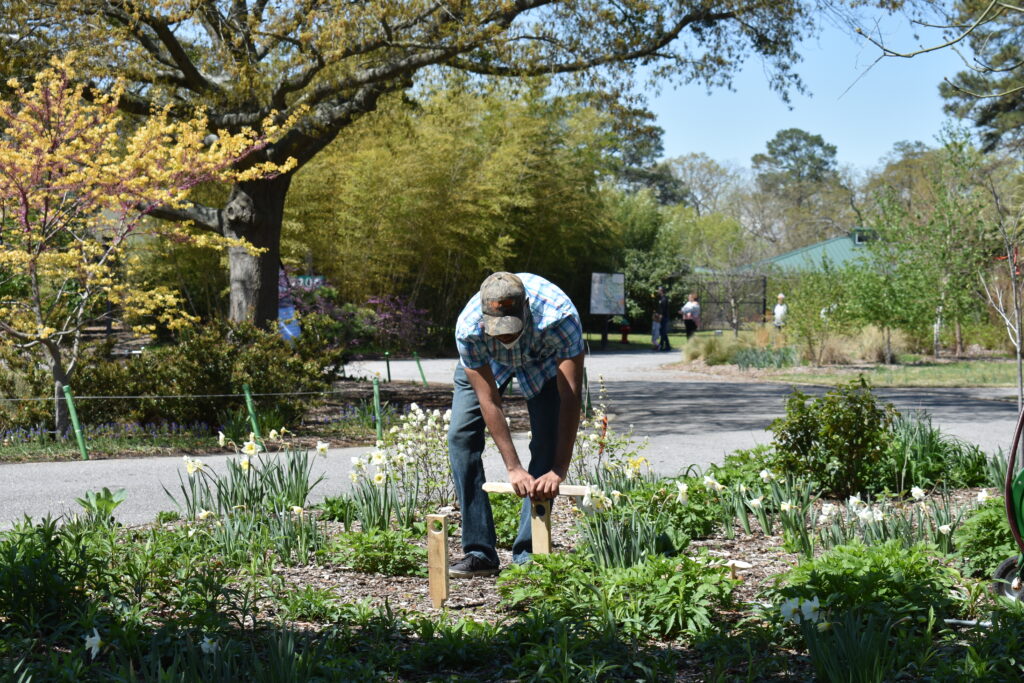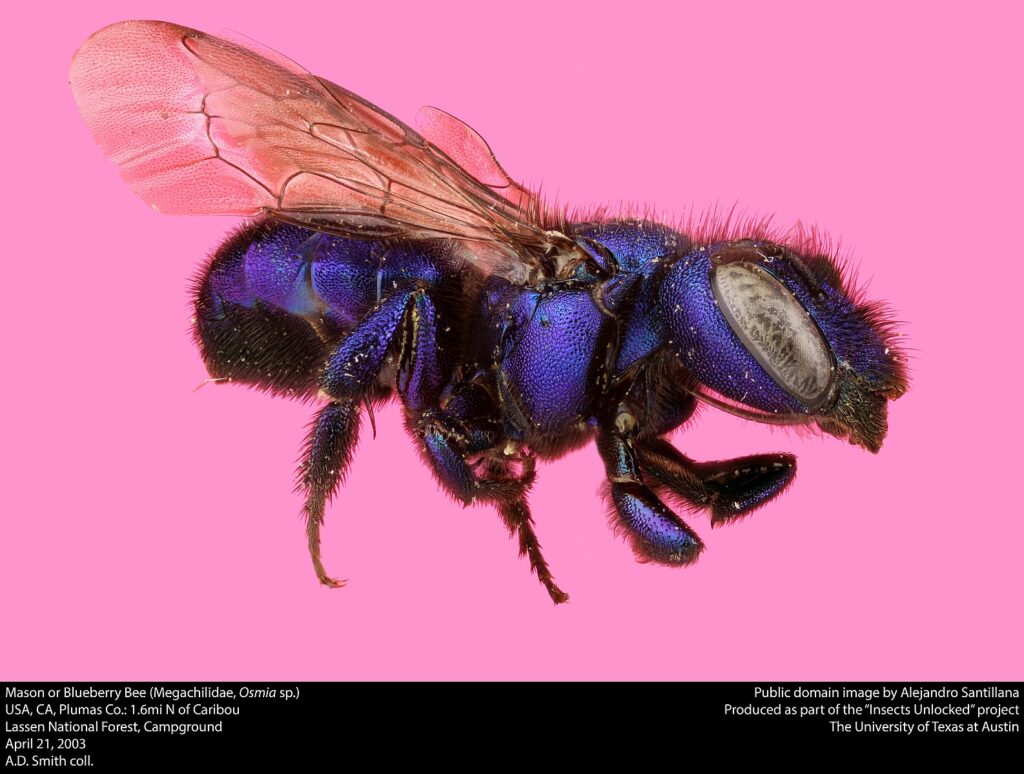Bee-neficial Science
Blog written by Guest Engagement Coordinator Sarah Peterson
If you’ve visited the Zoo recently, you may have noticed a few dozen small PVC pipes on wooden posts in areas such as the ZooFarm and Animal Wellness Campus orchard. Many guests have correctly identified these as bee houses, but they are even more than that!

Isiah Forward, a master’s degree student in Dr. Lisa Horth’s lab at Old Dominion University, is studying native “spring bees,” which are a variety of bee species that emerge and begin foraging early in the year. According to Forward, the bee houses are being used to study nesting behavior in response to olfactory cues (scent). The houses have pheromones, or chemicals released by animals for communication, of either bees or bee predators. They want to know if the bees can identify safe holes to nest in versus ones where bee predators may have been, which may be unsafe for the bees’ young. This work will aid in understanding sensory behavior in bees and the houses will also provide additional nesting habitat for the bees this year.
The houses have been placed in a very specific way to reduce the number of variables in the study. Since scent is involved, we ask that our guests admire the bee houses from afar and refrain from touching them.

Many species of spring bees are mason bees. Mason bees are solitary, meaning they do not live in colonies like honeybees or bumblebees. They are often a beautiful metallic blue color, about 1/3 the size of a honeybee, and are not aggressive as they do not have a hive or queen to protect. Mason bees get their name from the way they seal up their eggs with a wall of muddy material inside hollow stems or other holes. They cannot dig out their own nest sites, however, which is why bee houses like these are prime real estate.
Other native bees include bumblebees, carpenter bees, leafcutter bees, and sweat bees. They are all important pollinators and build their nests in different ways.
• Bumblebees are nectar generalists and will pollinate almost anything. They live colonially in nests built under rock piles, in leaf litter, or in empty animal burrows.
• Carpenter bees are another generalist and, as the name suggests, bore holes in wood which they seal with sawdust after laying their eggs.
• Leafcutter bees will find small cavities, often in rotted wood, to lay their eggs and seal the hole with chewed up leaves. They are incredible pollinators, sometimes even used commercially for agriculture like honeybees.
• Sweat bees are very small and have an amusing habit of treating humans likes a sports drink- they lick up our sweat for the hydration and minerals. They are also important pollinators and have a variety of interesting behaviors compared to other bee families: some sweat bee species are only active in the evening, some steal nest sites from other bees, and some are solitary while others live colonially.
While honeybees get a lot of attention, native bees are just as important for keeping our gardens blooming and our farms producing food. Many bee species are threatened by pesticide overuse and habitat loss. The good news is that, while honeybees need to be tended to by a beekeeper, anyone can help native bees! Here’s what you can do:
• Plant native plants! Native bees are already adapted to efficiently pollinate native plants, which provide them with a reliable food source. In Virginia, you can plant a huge variety of flowers and foods, such as blueberries and tomatoes. Additionally, native plants generally require less water and pesticides than non-natives.
• Provide nesting sites! If putting up bee houses like the ones in the study, be sure you can remove or clean out the used cavities each year. Small pieces of bamboo, reeds, or even paper straws are easy to replace. But even something as simple as leaving old logs, untidy leaf piles, or bare patches of soil can invite a variety of bee species. Make sure to leave potential nest sites undisturbed throughout the winter as many bee species need the full season to complete their lifecycle.
• Avoid pesticides! As stated before, many native plants are naturally more resistant to pests. You can also purchase or attract insect predators, such as ladybugs, to help protect your garden. If you must use chemical pesticides, be sure to use them sparingly, never just before it rains, and ideally not during spring and summer when pollinators are most active.
• Provide water! Pollinating is hard work, and everyone should stay hydrated. Bees will drink from many water sources, but a shallow dish with small rocks does the trick.